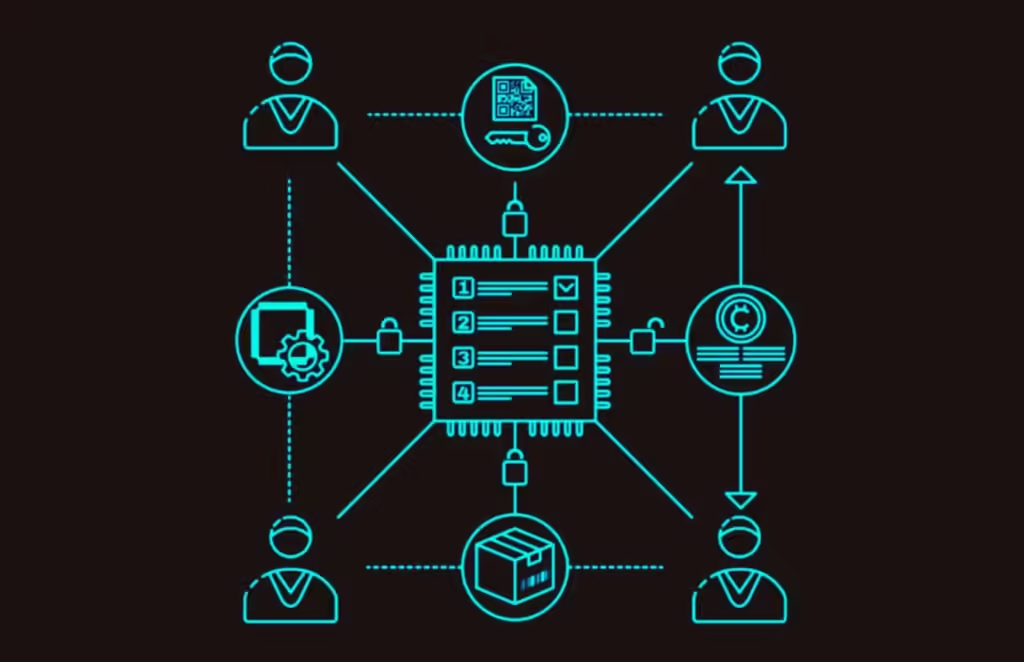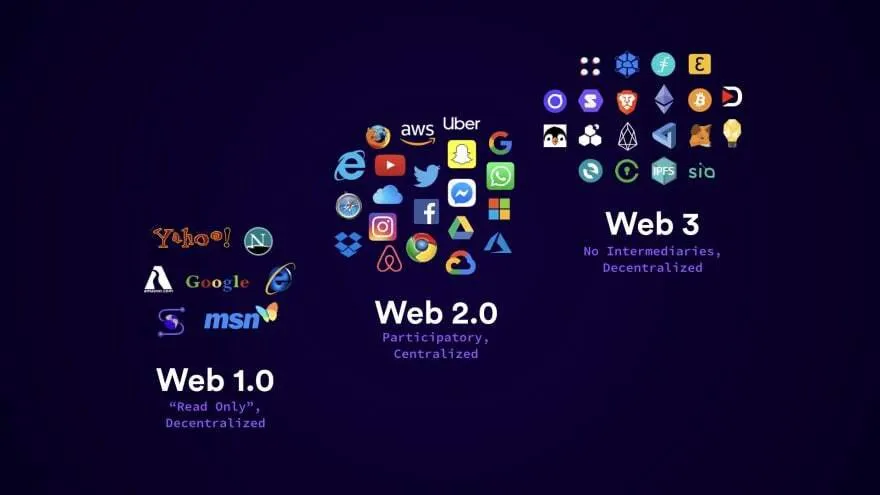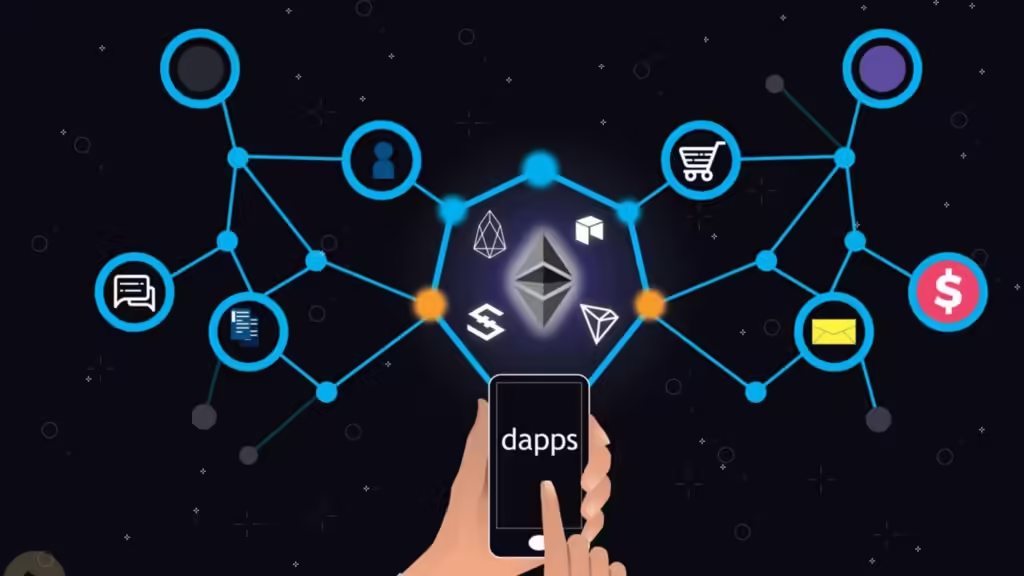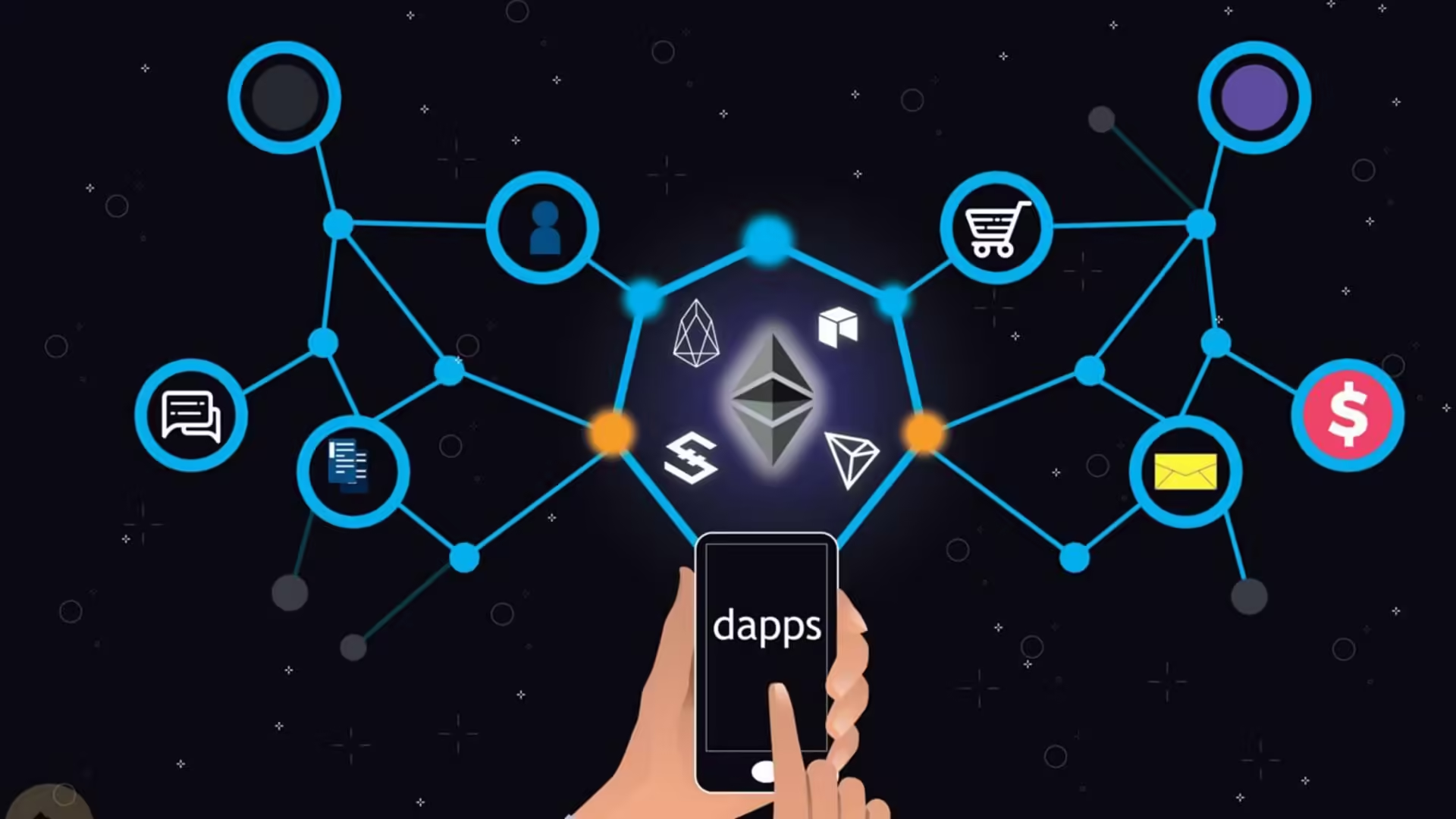As the internet continues to evolve, decentralization is becoming an increasingly prominent focus. Traditional web applications, which rely on centralized servers and databases, are now being challenged by decentralized web apps (dApps). These apps leverage blockchain technology, smart contracts, and peer-to-peer networks to eliminate central points of failure, increase security, and give users greater control over their data.
In 2024, decentralized web apps are emerging as a critical trend in web development, offering new opportunities and challenges for developers. In this post, we’ll explore what decentralized apps are, why they’re important, and what web developers should focus on when building decentralized apps in 2024.

What Are Decentralized Web Apps (dApps)?
A decentralized web app (or dApp) is an application that operates on a peer-to-peer network or blockchain rather than a centralized server. Unlike traditional apps where data is stored and managed by a single authority, dApps use smart contracts and decentralized storage systems, making them more secure, resilient, and resistant to censorship.
The core idea behind dApps is to remove intermediaries, creating a trustless system where users interact directly with one another. Key technologies involved in decentralized applications include:
• Blockchain: The backbone of decentralization, providing a distributed ledger that records transactions securely.
• Smart Contracts: Self-executing contracts with terms written in code, facilitating trustless transactions.
• Peer-to-Peer Networks: Networks where participants (nodes) share resources and communicate directly with each other.
Popular examples of dApps include decentralized finance (DeFi) platforms, NFTs marketplaces, and decentralized social networks.
Why Focus on Decentralized Apps in 2024?
In 2024, decentralization is at the forefront of innovation due to increasing concerns over privacy, data ownership, and security. Here’s why developers are shifting their focus toward building dApps:
1. User Control and Data Privacy: Decentralized apps return control of personal data to users, reducing the risk of breaches or misuse by centralized platforms. As data privacy laws (such as GDPR) become stricter, dApps offer a solution that puts data ownership directly in the hands of users.
2. Enhanced Security: Centralized systems are more vulnerable to attacks because of their single point of failure. dApps distribute data across multiple nodes, making it significantly harder for malicious actors to compromise the network.
3. Censorship Resistance: In decentralized networks, no single entity has control over the entire system, which makes it harder for governments or organizations to censor or restrict access to certain apps or content.
4. Financial Incentives and Tokenization: Many decentralized apps are built on blockchain networks that reward participants with tokens, creating opportunities for developers to monetize their dApps through new mechanisms such as cryptocurrency payments and staking.

Key Focus Areas for Web Developers in 2024
As the demand for decentralized apps grows, developers must adapt their skills and focus on the unique challenges of building decentralized applications. Here are the key areas web developers should focus on:
1. Mastering Blockchain Technology
At the core of decentralized apps is blockchain—the distributed ledger that securely records transactions across a network of computers. Web developers working on decentralized apps need to understand how blockchains work, including key concepts like consensus algorithms (e.g., Proof of Work, Proof of Stake), cryptography, and distributed networks.
Key blockchain skills to focus on:
• Building on popular blockchains like Ethereum, Solana, or Polkadot.
• Understanding how to deploy and interact with smart contracts.
• Familiarizing with Layer 2 solutions (e.g., sidechains) to enhance scalability.
2. Developing Smart Contracts
Smart contracts are a fundamental part of dApps. These self-executing contracts allow for trustless transactions and automation of processes on the blockchain. Developers should become proficient in writing secure and efficient smart contracts using languages like Solidity (for Ethereum) or Rust (for Solana).
Focus on:
• Writing secure smart contracts that minimize vulnerabilities (e.g., reentrancy attacks).
• Gas optimization to ensure smart contracts are efficient and cost-effective.
• Testing and auditing smart contracts for security flaws.
3. Decentralized Storage Solutions
In traditional apps, data is stored on centralized servers. However, decentralized apps require alternative storage solutions. Developers must explore decentralized storage networks like IPFS (InterPlanetary File System) or Arweave, which distribute data across multiple nodes, ensuring data redundancy and resilience.
Key decentralized storage technologies:
• IPFS: A peer-to-peer hypermedia protocol designed to make the web faster and more resilient.
• Arweave: A decentralized storage protocol that enables data permanence.
4. User Experience in Decentralized Environments
User experience (UX) is a critical consideration when building any application, but decentralized apps present unique challenges. For example, dApps often require users to manage private keys or cryptocurrency wallets, which can be confusing or intimidating for non-technical users. In 2024, successful dApps will need to prioritize user-friendly interfaces and seamless onboarding experiences.
UX considerations for dApps:
• Simplifying wallet integration and management (e.g., through tools like MetaMask).
• Providing clear instructions and feedback for blockchain transactions.
• Ensuring smooth, intuitive user flows without compromising on decentralization principles.
5. Interoperability Between Blockchains
The blockchain ecosystem is fragmented, with various networks operating independently. Interoperability allows different blockchains to communicate and share data, creating a more connected and scalable decentralized ecosystem. Web developers should focus on building dApps that can interact across multiple blockchains, using tools like cross-chain bridges or interoperability protocols.
Key tools for interoperability:
• Polkadot and Cosmos: Platforms designed to facilitate communication between different blockchains.
• Cross-chain bridges: Technologies that allow users to transfer assets between different blockchain networks.
6. Security and Auditing
Decentralized apps are highly secure by design, but they aren’t immune to vulnerabilities. Developers need to stay vigilant by thoroughly testing and auditing their code. Since there’s no central authority to fix issues or reverse transactions on a blockchain, any mistake could be costly.
Focus on:
• Utilizing formal verification tools to check smart contract code for potential errors.
• Regularly auditing code and employing third-party auditors for security checks.
• Implementing best practices for encryption and cryptography to ensure secure communication between dApp components.

The Future of Decentralized Apps in 2024
With advancements in blockchain scalability, zero-knowledge proofs, and decentralized storage, the future of decentralized apps looks promising. In 2024, developers will be able to build more powerful, efficient, and secure decentralized apps that rival traditional web apps in performance and usability.
As the decentralized ecosystem continues to grow, dApps will find applications beyond just DeFi or NFTs. We’ll see decentralized apps disrupting industries like healthcare, supply chain management, and even gaming, as more businesses and users realize the benefits of decentralization.
Conclusion
Building decentralized web apps in 2024 offers exciting possibilities for web developers, but it also requires a new set of skills and a different mindset compared to traditional web development. By focusing on mastering blockchain technology, writing secure smart contracts, and improving the UX of dApps, developers can play a crucial role in shaping the future of the decentralized web.
As decentralization gains momentum, web developers who embrace this new frontier will be well-positioned to create innovative, scalable, and secure applications that empower users and break free from the limitations of centralization.
Internal Links:
• Explore more about blockchain development.
• Read our guide on smart contract security.

